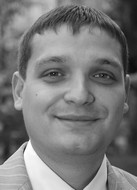Study of physiological indices of taekwondokas in case of sensory conflict
Фотографии:
ˑ:
Teoriya i praktika fizicheskoy kultury №12 2017, pp.62-64
Associate Professor, PhD D.A. Saraykin1
Associate Professor, PhD E.L. Bacherikov2
Dr.Med., Professor J.G. Kamskova1
Dr.Biol., Professor V.I. Pavlova1
1South Ural State Humanitarian-Pedagogical University, Chelyabinsk
2Ural State University of Physical Culture, Chelyabinsk
Physiological indices of taekwondokas are considered in case of a sensory conflict. A group of 18 boys aged 18-20 years engaged in taekwondo was subject to physiological studies. All subjects had their average latent simple visual-motor reaction time and resting heart rate sitting measured. The results of the research showed that in case of borderline functional states the change in the lability of nervous processes in the central nervous system leads to slowing down of the control effects of the autonomic nervous system on the heart and blood vessels, which causes, depending on the magnitude of changes in the lability of the nervous processes, either very slow heart rate reaction (HR), or a paradoxical reaction (a decrease in heart rate). Based on the latent simple visual-motor reaction time rating performed against the background of a sensory conflict, the initially homogeneous contingent can be divided into separate groups by resistance to sensory conflicts. The individual coefficient of time variation of a simple sensorimotor reaction when moving on an unstable support serves as a criterion of instability to sensory conflicts, as well as energy demand and complexity of integration of central and autonomic mechanisms.
Keywords: taekwondoka, sensorimotor reaction, sensory conflict, latent period, excitability of cortical processes.
References
- Bacherikov E.L., Kamskova Y.G., Avtukhovich A.I. et al. Otsenka integratsii sensomotornoy deyatelnosti po pokazatelyam labilnosti nervnoy sistemu u studentov [Evaluation of integration of sensorimotor activity by nervous system lability indices in students]. Vestnik Yuzhno-Uralskogo gosudarstvennogo universiteta. Obrazovanie, zdravookhranenie, fizicheskaya kultura. 2009, is. 18, no.7 (140), pp. 53-54.
- Iznak A.F. Modulyatsiya sensomotornoy deyatelnosti cheloveka na fone ritma EEG [Modulation of human sensorimotor activity against the background of EEG rhythm]. Problemy razvitiya nauchnykh issledovaniy v oblasti psikhicheskogo zdorovya [Problems of development of scientific research in the field of mental health], Moscow: 1989, pp. 3-24.
- Pavlova V.I., Terzi M.S., Saraykin D.A. Fiziologicheskie i psikhofiziologicheskie osobennosti sensomotornoy adaptatsii u edinobortsev raznykh kvalifikatsiy [Physiological and psychophysiological features of sensorimotor adaptation in combatants of different skill levels]. Fundamentalnye issledovaniya, 2014, no. 6, vol. 7, pp 1412-1417.
- Sivakov V.I., Sivakov D.V., Sivakov V.V. Kvantovy metod v povyshenii energosistemy sportsmenov [Quantum method to increase athletes’ energy system]. Zapiski uchenyih un-ta im. P.F. Lesgafta, 2016, no. 12 (142). pp. 116 –120.
- Sivakov V.I. Upravlenie psikhicheskoy napryazhennostyu starshikh doshkolnikov v protsesse fizicheskogo vospitaniya [Management of mental orientation of senior preschoolers in physical education process]. Chelyabinsk: ChSPU publ., 2015. 164 p.
- Terzi M.S., Saraykin D.A., Pavlova V.I., Kamskova J.G. Psikhofiziologicheskie determinanty sportivnogo masterstva edinobortsev [Psychophysiological Determinants of Sports Skills of Combatants]. Teoriya i praktika fiz. kultury, 2014, no. 12, pp. 66– 70.
- Altman Y.A. Fiziologiya sensornykh sistem [Physiology of sensory systems]. St. Petersburg: Paritet publ,, 2003, 352 p.
- Raptis H.A., Dannthbaum E., Paquet N., Feldman A.G. Vestibular system may provide equivalent motor actions regardless of the number of body segments involved in the task. J. Neurophysiol., 2007, no. 97 (6), pp. 628-634.



